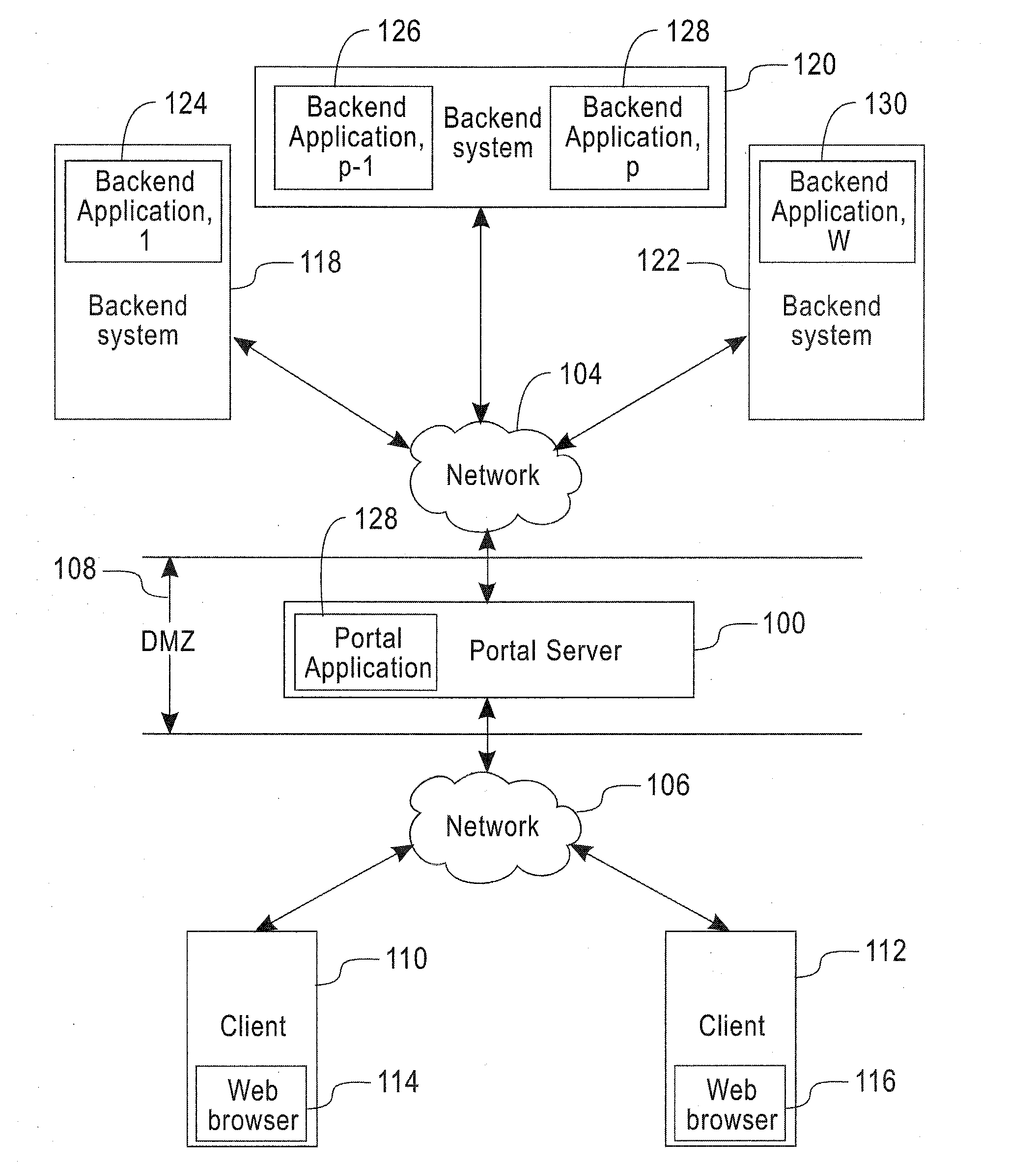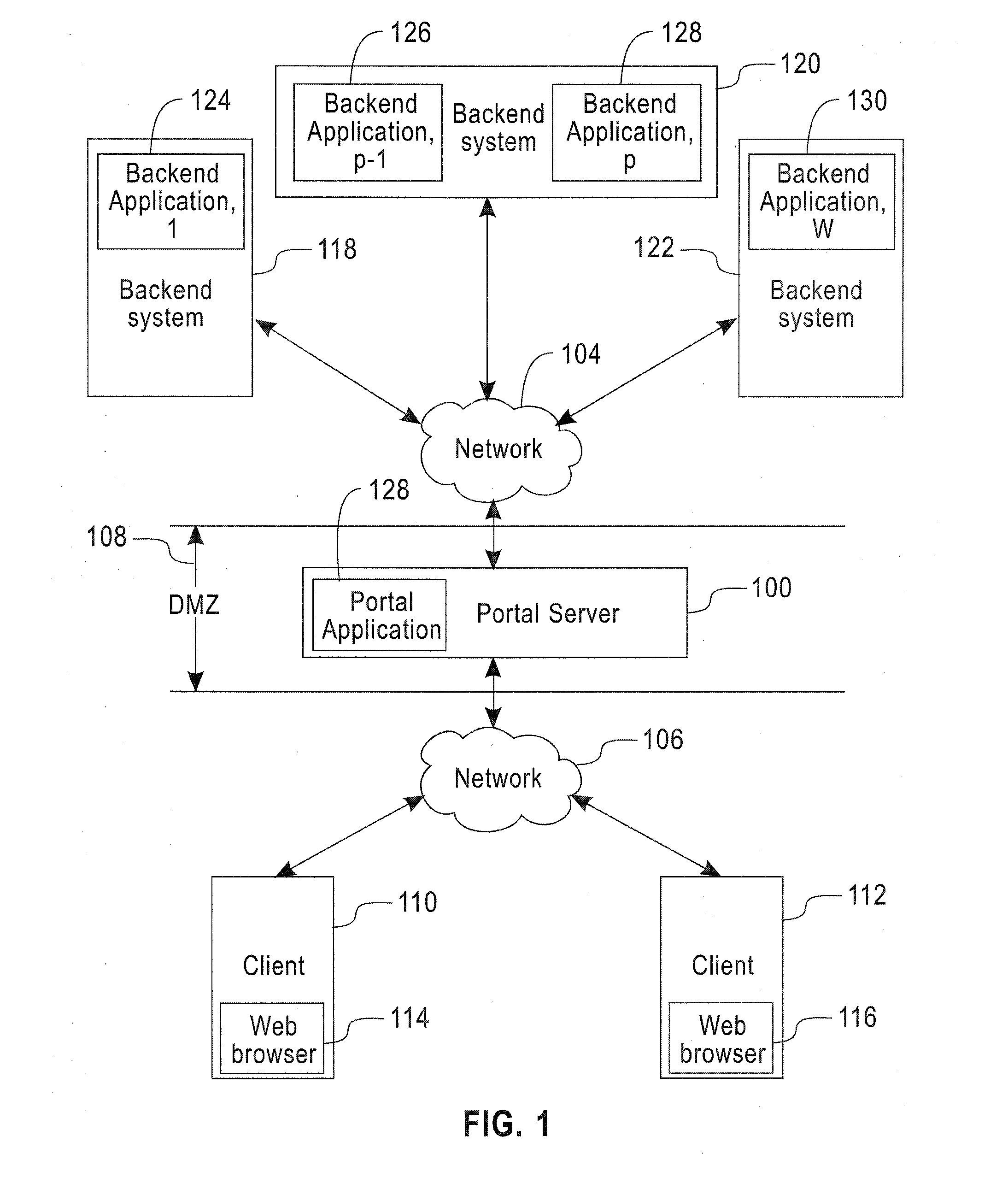Mashup component isolation via server-side analysis and instrumentation
a server-side analysis and component technology, applied in the field of computer network security, can solve the problems of limiting interaction, lack of clean ways to isolate client-side components, and weak mechanisms offered by current browsers, and achieve the effect of improving security for mashups
- Summary
- Abstract
- Description
- Claims
- Application Information
AI Technical Summary
Benefits of technology
Problems solved by technology
Method used
Image
Examples
Embodiment Construction
[0028]In the following description, reference is made to the accompanying drawings which form a part hereof and which illustrate several implementations. It is understood that other implementations may be utilized and structural and operational changes may be made without departing from the scope of the present implementations.
[0029]FIG. 1 illustrates a block diagram of a computing environment including certain implementations of the invention. A portal server 100 contains a portal application 102 and connects to two networks 104 and 106. The portal server 100 may be any computational device such as a personal computer, a workstation, a server-class computer, a mainframe, a laptop, hand-held, palm-top or telephony device. Network 104 and 106 may be a local area network, an Intranet, the Internet or any other type of network. In one implementation network 104 is a local area network and network 106 is the Internet.
[0030]Portal server 100 is located within a demilitarized zone (DMZ) 1...
PUM
 Login to View More
Login to View More Abstract
Description
Claims
Application Information
 Login to View More
Login to View More - R&D
- Intellectual Property
- Life Sciences
- Materials
- Tech Scout
- Unparalleled Data Quality
- Higher Quality Content
- 60% Fewer Hallucinations
Browse by: Latest US Patents, China's latest patents, Technical Efficacy Thesaurus, Application Domain, Technology Topic, Popular Technical Reports.
© 2025 PatSnap. All rights reserved.Legal|Privacy policy|Modern Slavery Act Transparency Statement|Sitemap|About US| Contact US: help@patsnap.com



